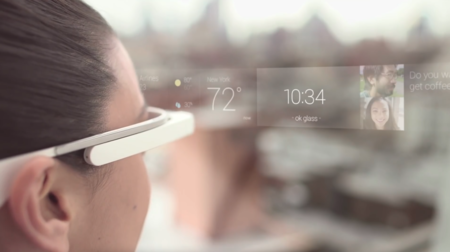Google Glass was an innovative project introduced in 2012, aiming to revolutionize the way we interact with technology. However, privacy concerns, a high price, and poor battery life caused the project to fail in the consumer market. Google shifted its focus to the enterprise market, where the device found success in several industries. The new version, called Google Glass Enterprise, allowed hands-free access to information while performing tasks, such as repairing machines or accessing patient information during surgery. The glasses had improved battery life and design, tailored for businesses. In 2020, Google stopped selling the Google Glass Enterprise 2, putting an end to the product’s futuristic glasses dream. Xiaomi has introduced its smart glasses, showcasing the future of augmented reality technology.
In 2014, Google Glass Explorer Edition hit the market, but its reception was not what the company expected. Privacy concerns were raised due to the device’s ability to record video and take photos without others’ consent. People started calling the users “Glassholes,” and some bars, restaurants, and movie theaters even banned the glasses.
Moreover, the price was too high for what the device offered, and its design was not visually appealing to everyone. Additionally, the battery life was poor, and the voice recognition system was not efficient enough to understand all commands correctly.

All these problems caused the Google Glass project to fail miserably in the consumer market, and the company decided to stop selling it in 2015. The technology was not advanced enough to make the device practical and user-friendly, and Google failed to address the privacy and design concerns raised by potential customers.
However, this was not the end of Google Glass. The company shifted its focus towards enterprise use and released a new version of the glasses in 2017 called Google Glass Enterprise Edition. These glasses had a better battery life, an improved design, and were tailored for industries such as manufacturing, logistics, and healthcare.
In these industries, the device proved to be useful for workers who needed hands-free access to information while performing tasks. For example, a technician could use the glasses to see instructions while repairing a machine or a surgeon could access patient information without having to turn away from the operation.
As of 2021, Google Glass Enterprise Edition is still available and has found success in several industries. The device is also being used in education and research projects to explore new ways of delivering information and enhancing the learning experience.
In conclusion, Google Glass was a fascinating and innovative project that failed to meet consumers’ expectations due to its high price, poor battery life, privacy concerns, and unappealing design. However, the glasses found a new life in the enterprise market, where they have been successful in several industries.
In 2012, Google introduced its ambitious project, Google Glass, which aimed to revolutionize the way we interacted with technology. The device would provide hands-free access to information, make and receive calls, record videos, and take photos. However, the product raised privacy concerns, and its design and functionality left much to be desired. In this article, we’ll discuss the rise and fall of Google Glass and its current state.
Google Glass Explorer Edition
In 2013, Google released an initial model of the glasses, called the “Explorer Edition,” for developers to create the first applications for the device. However, early testers and developers complained about the device’s battery life, bugs, and voice recognition system’s inefficiency. Moreover, privacy concerns surfaced because the device could take photos and record videos without others’ consent.
Google Glass Enterprise Edition
In 2015, Google stopped selling the Explorer Edition and rebranded the device for enterprise use. The new version, called Google Glass Enterprise, was designed for industries such as manufacturing, logistics, and healthcare. The glasses allowed hands-free access to information while performing tasks, such as repairing a machine or accessing patient information during surgery.
The enterprise version was well received, and in 2017, Google launched “Glass at Work,” a program that included professional applications from Google partners. The device’s battery life improved, and the design was tailored for businesses. The glasses found success in several industries and were even used in education and research projects to explore new ways of delivering information and enhancing the learning experience.
In 2019, Google introduced the Google Glass Enterprise 2, which embraced artificial intelligence and a more conventional frame design, similar to prescription glasses.
The End of Google Glass
Despite its success in the enterprise market, Google stopped selling the Google Glass Enterprise 2 in 2020, putting an end to the product’s futuristic glasses dream. However, the company continues to work on other projects that involve virtual reality.
In conclusion, Google Glass was a product that generated a lot of excitement and anticipation, but its flaws and privacy concerns resulted in its failure in the consumer market. Google shifted its focus to enterprise use, where the device found success in several industries. Although the product is no longer available, Google continues to explore new technologies that can change the way we interact with the world.
Xiaomi has introduced its smart glasses, showcasing the future of augmented reality technology.
Don’t miss interesting posts on Famousbio










